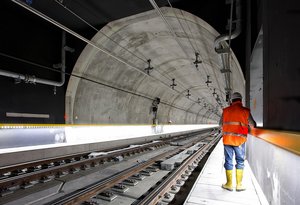creativity and curiosity
How do I create a breakthrough in tough issues?
Our small innovation has succeeded, how do we scale up to the entire organization?
How do we develop a strong change narrative with everyone?
How do we get from 'thinking' and 'talking' to 'doing'?
How do I find and tap into energy for change?
Change requires space. Space for thinking in terms of possibilities. And for conversations that matter. What do we find important? What do we dream of? What keeps us awake? But also space for experimenting and finding new approaches. Where do you find this space? And how can you set things in motion?
From the here and now
Sometimes change is necessary in the sense of ‘a next step’; moving from 1.0 to 2.0 or beyond. At other times a radical shift is called for; a breakthrough. Whatever the case, it is impossible to start from where you are not. All innovation therefore starts with a joint moment of reflection. Where are we now? What works and what doesn't? And: where do we want to go? What does our desired future look like? And what makes it important to us? The more concrete these images are, the better. An attractive, vivid vision evokes creative tension. A positive sense of urgency. If possible, we involve your clients and other external parties in this reflection process. Because once you start moving, the entire system moves with you. And then it’s helpful to be in the same (change) story.
Exploring
A desired future can seldomly be approached or implemented in a straightforward way. It is often more effective to move towards it one step at a time, exploring and improvising as you go along. Getting an understanding of why and where the process stagnates, investigating where it already does work, literally doing research with interviews and questionnaires, looking at best practices from others, trying out new approaches.... In these ways, a new practice can be built step by step, together. We design and support these kinds of processes. The right conversational formats and helpful questions free up energy and knowledge from the group and help you go along.
Dealing with uncertainty
Change has an uncertain component. People go from the old and familiar to a future that they don't know, but still have to realise. That requires trust. That's why we pay attention to strengthening the mutual connections. By sharing expectations and stories together and quickly taking concrete first steps. That gives people something to hold on to. And it provides the necessary space: if people are invited to think of alternatives to the present situation, and if there is room for naming obstructions and concerns, pro-activity gets triggered and creativity starts to flow.
Movement
Kessels & Smit helps you realise transitions by tapping into strengths and good practices that are already there, and by making small steps ‘contagious'. Whether it is an innovation that you initiate as a leader, improvement ideas that emerge from your team or bigger change efforts that are deployed throughout the organisation. We aim to help you realise a movement in the right direction that is a worthwile step in itself and also lays the foundation for something bigger.
Related cases
-
 Creating focus in a change process
Creating focus in a change process
Achieving breakthroughs on tough issuesA young municipality with about 200,000 inhabitants had a change agenda on which they made good progress in the beginning. However, some of the more tough and sticky issues remained unresolved. This was problematic, as these were at the core of the development, namely: working in close connection with the city and its inhabitants, creating a more flexible organisation and investing in mutual cooperation. Management wanted to get moving on these major themes and was therefore looking for an approach that could help the organisation break through the existing patterns. Approach We decided to put together a change team for each assignment, consisting of employees who had a strong affinity with the subject in question but who did not necessarily have to deal with it themselves in their work. This allowed them to adopt the assignment with the drive to really move it forward and at the same time to look at it with some professional distance. ... ›› -
 Towards a culture of caring
Towards a culture of caring
Dialogue and meaning-making as catalystsThe manager of a University Hospital dreamt of, what he called, ‘a culture of caring’. With care as a central element, in a number of ways. Patient care, care for each other as colleagues, and self-care: resilience and personal attention. His question was: How do we get people on board for this idea in a large organisation? How do we translate a broad concept as ‘a culture of caring’ into concrete daily work practices? Approach Over the course of a few years we supported this culture development with a range of activities. For example, we organised World Cafés with all managers on how they - in their role - enable a culture of caring. In sessions with the strategic management team, we searched for leadership strategies for them to include an organisation of 6,000 employees in this story. And once a year, a 'Day of Dialogue’ is organised, in which 250 employees from very different roles and departments, have in-depth conversations with each other about care, values and culture. ... ›› -
 Increasing safety in contractor companies
Increasing safety in contractor companies
Conversations that make a differenceWhen striking up a partnership with a large number of contractors, a multinational petrochemical and gas production company came up against a strong difference when it came to safe working practices. It was cause for concern to them. The contractors were hired to repair damage caused by the petrochemicals group's gas production activities in a certain area. And the company felt partly responsible for ensuring that this was done safely. Without accidents and injuries. That's why it wanted to support the contractors in creating stronger safety awareness and practices. Approach The differences between local contractors and the petrochemical group in terms of safety were so great that we decided not to operate from this company, but to set up an independent foundation that we could use as a neutral platform. ... ›› -
 Adopting a new organisational structure
Adopting a new organisational structure
Change in one day - with a bit of preparation…The IT department of a large multinational shipping company had just finished a significant redesign of its organization. The new structure was ready, the consultants were gone and the new leadership team was ready to get to work. Yet: the organization was in a stuck state – and the big question was: how can we help all 200 internal employees to shift into gear for the new organization?
››